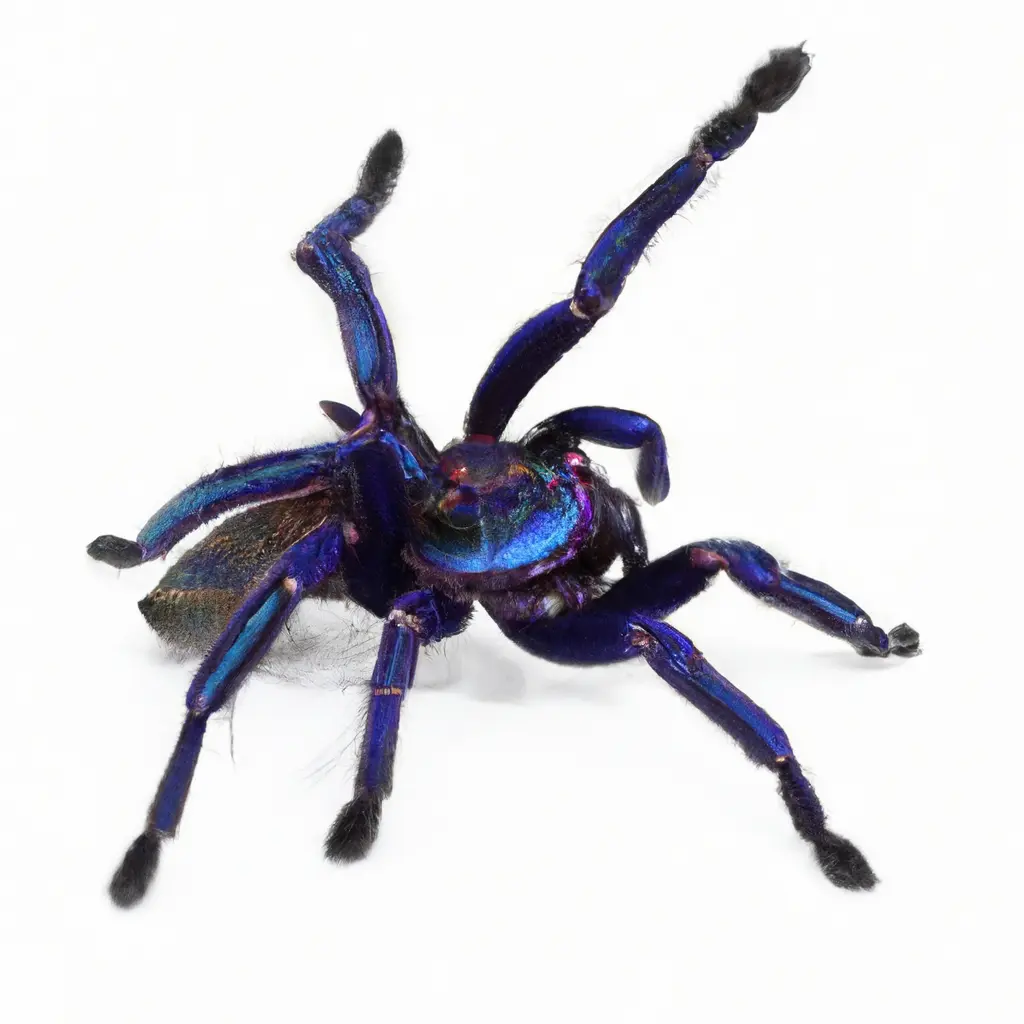We're looking at a blue electric tarantula in Thailand.

Researchers have discovered a new species of tarantula with a rare and "charming" coloration: some parts of its back, legs, and jaws have a shimmering electric blue-purple hue. The spider, named Chilobrachys natanicharum, is the only known species of tarantula inhabiting the mangrove forests of Thailand. The team described this spider in a paper published in the journal ZooKeys last month.
“During our expedition, we walked in the evening and at night during low tide and were only able to catch two of them,” says co-author Narin Chomphuphuang, a researcher from Khon Kaen University in Thailand, in a statement. “These spiders inhabit hollow trees, and the challenge of catching the electric blue spider lies in the need to climb the tree and lure it out from the complex hollow tree in wet and slippery conditions.”
In addition to its coloration, C. natanicharum stands out among other tarantulas for its ability to live both in trees and in burrows in evergreen forests. New research has shown that electrically blue spiders also inhabit mangrove thickets, where they mainly prefer tree cavities due to the tides, according to a statement.
Although this spider was known earlier due to tarantula trade, it had not been officially named, and scientists had not described its characteristics or habitat.
The blue color is one of the rarest colors in nature - less than one in ten flower colors are blue, and only about 4 percent of all 900 known species of tarantulas have blue coloring, writes Liz Langley for National Geographic. In plants, color is achieved through pigments that absorb most colors of light but appear as reflected.
5 May 2025
13 May 2025
Animals have a slightly different way of producing the color blue - they rely on physics to create a visual illusion known as iridescence, where colors appear to change slightly when viewed from different angles.
"The secret to the bright blue color of our tarantula lies not in the presence of blue pigments, but rather in the unique structure of their hairs, which includes nanostructures that manipulate light," says Chomphuphuang in a statement.
“The color is actually ‘mesmerizing,’” he tells CNN’s Hafsa Khalil, “and it reminds me of electric blue sparks.”
Typically, the bright coloration of animals serves to deter predators, attract mates, or provide camouflage, according to National Geographic. Due to the complex mating rituals of these spiders, it is possible that the color is intended to attract the attention of other tarantulas - and it has already caught the attention of humans.
“As humans, we are very attracted to rare, shiny colors,” says Sebastián Echeverri, an independent arachnologist and science communicator who was not involved in the study, in an interview with National Geographic. “So we remember these species.”
Chilobrachys natanicharum was named in honor of two leaders of a Thai real estate company that won the auction for the name of this spider. All proceeds from the auction were directed towards the education of Lahu tribe children in Thailand and cancer patients, the authors write in their article.
Unfortunately, the new species of tarantulas faces the same threats as other local populations: habitat destruction and hunting of tarantulas. In their article, the authors conclude that "it is important to conserve these species by protecting their natural habitats through the establishment of protected areas and the implementation of management plans for both the species and their habitats."
Comment
Popular Posts
Popular Offers

Subscribe to the newsletter from Hatamatata.com!
Subscribe to the newsletter from Hatamatata.com!
I agree to the processing of personal data and confidentiality rules of Hatamatata














